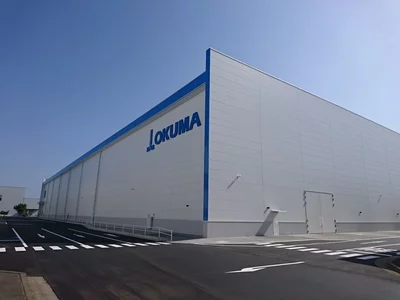Okuma has completed the construction and started operation of the new Kani Dream Site 3 (DS3) plant, that continues the concept behind the headquarters' factories, Dream Site 1 (DS1) and Dream Site 2 (DS2).
Evolving Factories
Okuma builds factories that are constantly evolving with the goal to spur improvement and innovation. Together with the trends of IoT, big data, AI, and intelligent technology in the Fourth Industrial Revolution, the construction of smart factories that can achieve high-mix low-volume production while maintaining productivity equivalent to that of mass production has been moving forward.
Okuma was one of the first companies to start operation of a self-contained start-to-finish production system (DS1) in 2013. In 2017, the DS2 parts factory was opened and has been using IoT to achieve super high-mix-low-volume production that is highly efficient and has high value-added. The DS1 and DS2 parts factories integrate automation and expert techniques. Due to the advanced measures described below, these smart factories are 50 percent more productive then older production plants and have reduced production lead time by 50%.
The latest automation, unmanned operation technology, advanced IoT, and know-how from the shop floor
The new Kani DS3 factory uses cutting-edge smart machines, robots, and FMS together with advanced IoT to accurately understand production progress and operation conditions. The machine parts production at DS3 is synchronized with the assembly processes, so that the necessary parts are produced at the necessary time in the necessary quantities. The new Kani Plant is constructed to become a start-to-finish production plant for vertical and horizontal machining centres and double-column machining centres.
Okuma is expanding their production capacity by categorizing the plants by the models they produce, by building self-contained start-to-finish production systems throughout the company and by increasing production efficiency. Smart CNC machine tools, robots, and FMSs, such as super multitasking machines that have built-in AI and lasers, are used in advanced ways to achieve automation that allows 72-hour unmanned operation. In addtion to that, accurate and fast work instructions that utilise IoT, as well as progress and operation monitoring systems boost the overall optimization of the producition plants.
